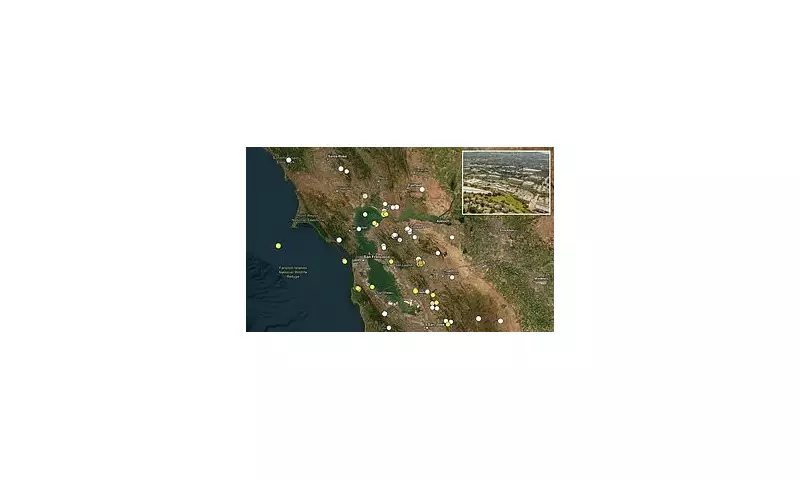
Unusual Seismic Swarm Rattles California's Bay Area
The San Francisco Bay Area has experienced an unsettling surge in seismic activity this month, with at least 90 small earthquakes shaking the region since November 9th. The East Bay city of San Ramon has become the epicentre of this persistent tremor activity, situated directly above the Calaveras Fault—an active branch of the notorious San Andreas Fault system.
Understanding the Seismic Risk
This geological unrest has prompted scientists from the U.S. Geological Survey to investigate what's driving this unusual burst of activity. The Calaveras Fault presents a genuine threat, being capable of producing a magnitude 6.7 earthquake that would impact millions of residents across the densely populated Bay Area. According to USGS estimates, there's an 18 percent chance of such an event occurring by 2030.
The current seismic sequence began with a 3.8 magnitude quake on November 9, with smaller tremors continuing relentlessly since. While clusters of small earthquakes can sometimes precede larger seismic events, California scientists emphasise this particular swarm doesn't fit that pattern.
Sarah Minson, a research geophysicist with the U.S. Geological Survey's Earthquake Science Center, told SFGATE: 'This has happened many times before here in the past, and there were no big earthquakes that followed. We think that this place keeps having earthquake swarms due to a lot of fluid-filled cracks, thanks to very complex fault geometry.'
Historical Context and Scientific Analysis
This month's activity marks at least the sixth swarm to rattle the area since 1970, with the most recent occurring in 2015. Scientists studying the 2015 San Ramon earthquake swarm made crucial discoveries about the region's underground structure.
The research revealed the area contains several small, closely spaced faults rather than a single major fault line. The earthquakes moved along these faults in complex patterns, suggesting they interact with each other. The study also found evidence that underground fluids may help trigger the tremors.
Roland Burgmann, a UC Berkeley seismologist involved in that research, suggests the current activity represents more than just a swarm—it's a tense aftershock sequence where each tremor echoes the power of the initial 3.8 magnitude event that started it all.
The last significant earthquake on the Calaveras Fault was a magnitude 5.1 event in October 2022 near Mount Hamilton. While not historically large, it was the biggest on this fault since 2007 and the largest in the Bay Area since 2014. The fault's largest historical quake remains the magnitude 6.6 event in 1911, and scientists consider the Calaveras Fault overdue for another major earthquake.
Emily Brodsky, a seismologist at UC Santa Cruz, acknowledges the puzzling nature of these tremors, making it difficult for scientists to draw firm conclusions about subsurface activities. 'Although it's the kind of thing you might expect to happen before a big earthquake, we can't distinguish that from the many, many times that have happened without a big earthquake,' she explained.
The geological complexity extends further, with research revealing the dangerous Hayward Fault is essentially a branch of the Calaveras Fault. This connection means both faults could rupture together, potentially generating a magnitude 7.3 earthquake—2.5 times stronger than a solo Hayward event and significantly more destructive than previously anticipated.
In a seismic hazard update released last month, the USGS estimated a 14.3 percent chance of a magnitude 6.7 or higher earthquake on the Hayward Fault within the next 30 years, while the Calaveras Fault carries a 7.4 percent risk. These calculations assume independent action, but the underground connection between these faults presents a more concerning scenario that continues to challenge seismologists.





